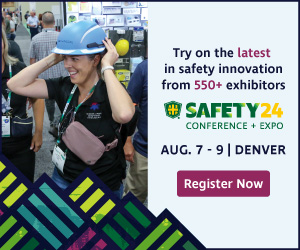Occupational Health Experts Recommend New Guidelines to Prevent Workplace Illness and Injury
The comprehensive guide is free and includes specific examples of leading health metrics, how to create a balanced set of leading health metrics, and how implement and measure them in a workplace
AIHA, the association for scientists and professionals committed to preserving and ensuring occupational and environmental health and safety (OEHS), announced new guidelines for developing health metrics in workplaces. The leading health metrics guidelines are designed to prevent workplace illness and injury, with an overarching goal for workers to return home as healthy as when they came to work.
“The focus on identifying measures that occur before worker’s health is harmed is critical to safeguarding worker health. AIHA hopes that these guidelines help employers create healthier workplaces and prevent occupational illness and injury in the first place,” said AIHA CEO Lawrence D. Sloan, CAE.
Best Practice Guide for Leading Health Metrics in Occupational Health and Safety Programs is a guide for both practitioners and managers in the broad occupational health community, including industrial hygiene, occupational medicine, occupational health nursing, engineering, and human resources. It applies to businesses of all sizes in all industry sectors, including but not limited to, manufacturing, distribution, healthcare, and nongovernmental organizations.
Leading health metrics – as opposed to lagging health metrics – focus on disease prevention and health promotion. They are measurable, evidence-based indicators that are used to monitor, predict, influence, and manage exposures, hazards and conditions in a workplace that may impact worker health. Health outcomes addressed by leading metrics can be acute, such as eye irritation, dermatitis, or metal fume fever—or they can be chronic, such as elevated blood pressure, hearing loss, or cancer. Leading health metrics can include the number of workers exposed to hazardous noise, the number of those who participate in tobacco cessation programs, etc.
Lagging metrics measure after-the-fact occurrences, such as injury and illness rates and prevalence of disease. Unfortunately, lagging metrics are not preventive, as worker health has already been impacted. Because of the lag time between exposure and adverse health effects, such metrics can give false reassurance when the physical manifestation from an adverse exposure is not yet present.
The comprehensive guide is free and includes specific examples of leading health metrics, how to create a balanced set of leading health metrics, and how to implement and to measure them in a workplace. Visit http://www.workerhealthsafety.org to download a copy.
Share on Socials!
Register Today for the Free NHCA Virtual Fall Ignite Session!
AIHA announces new guidance to protect first responders from dangerous health hazards
Unlocking ESG Materiality with IsoMetrix Lumina ESG Software
Leaders in Industrial Hygiene
Council for Accreditation in Occupational Hearing Conservation (CAOHC)
Subscribe!
Sign up to receive our industry publications for FREE!









